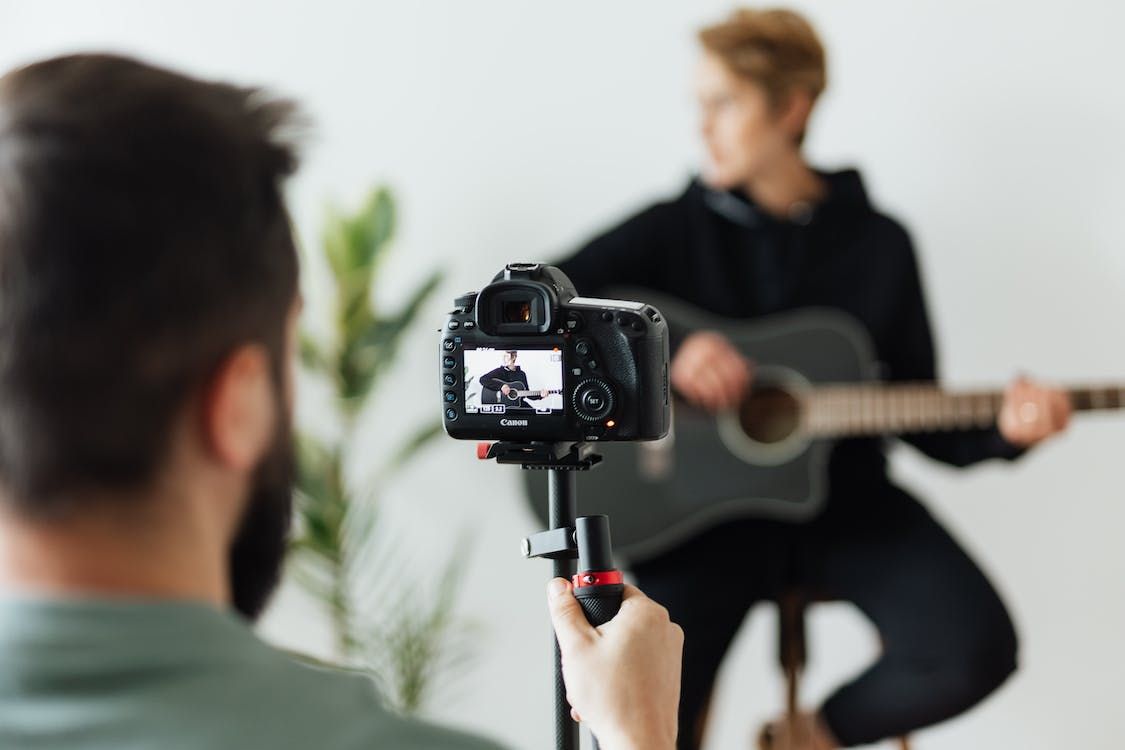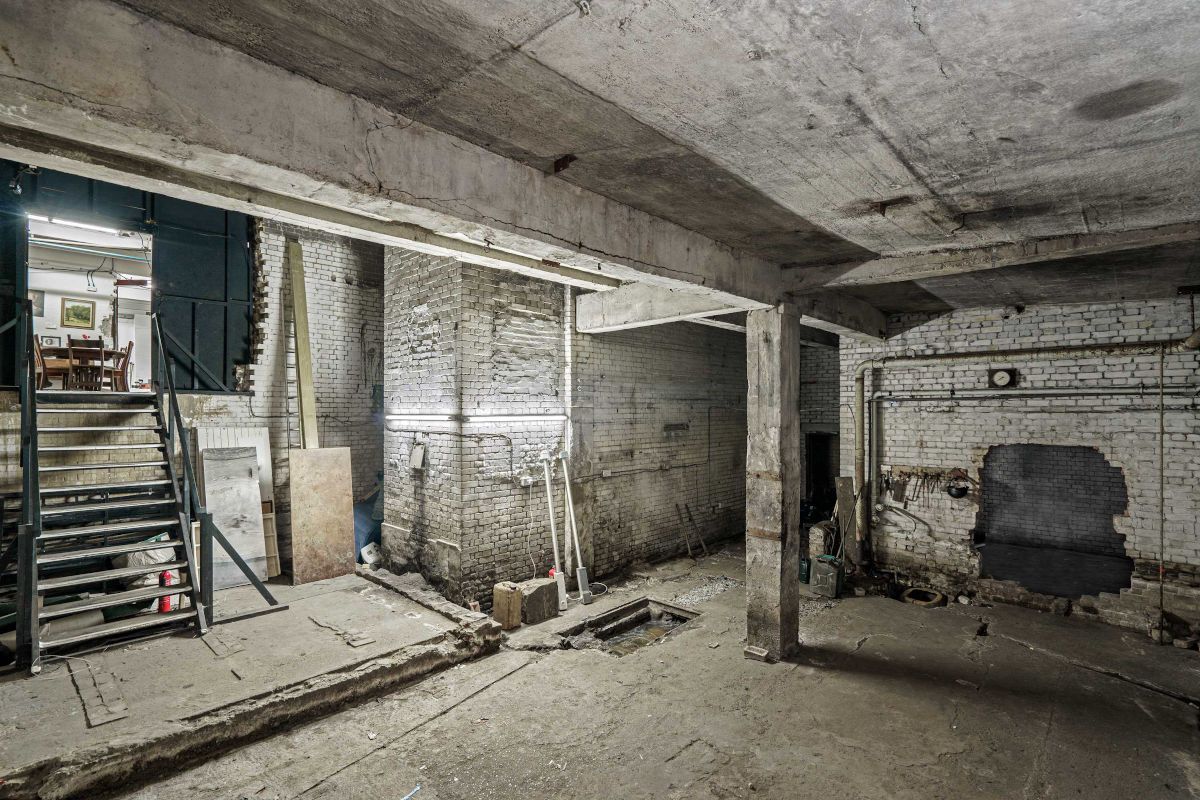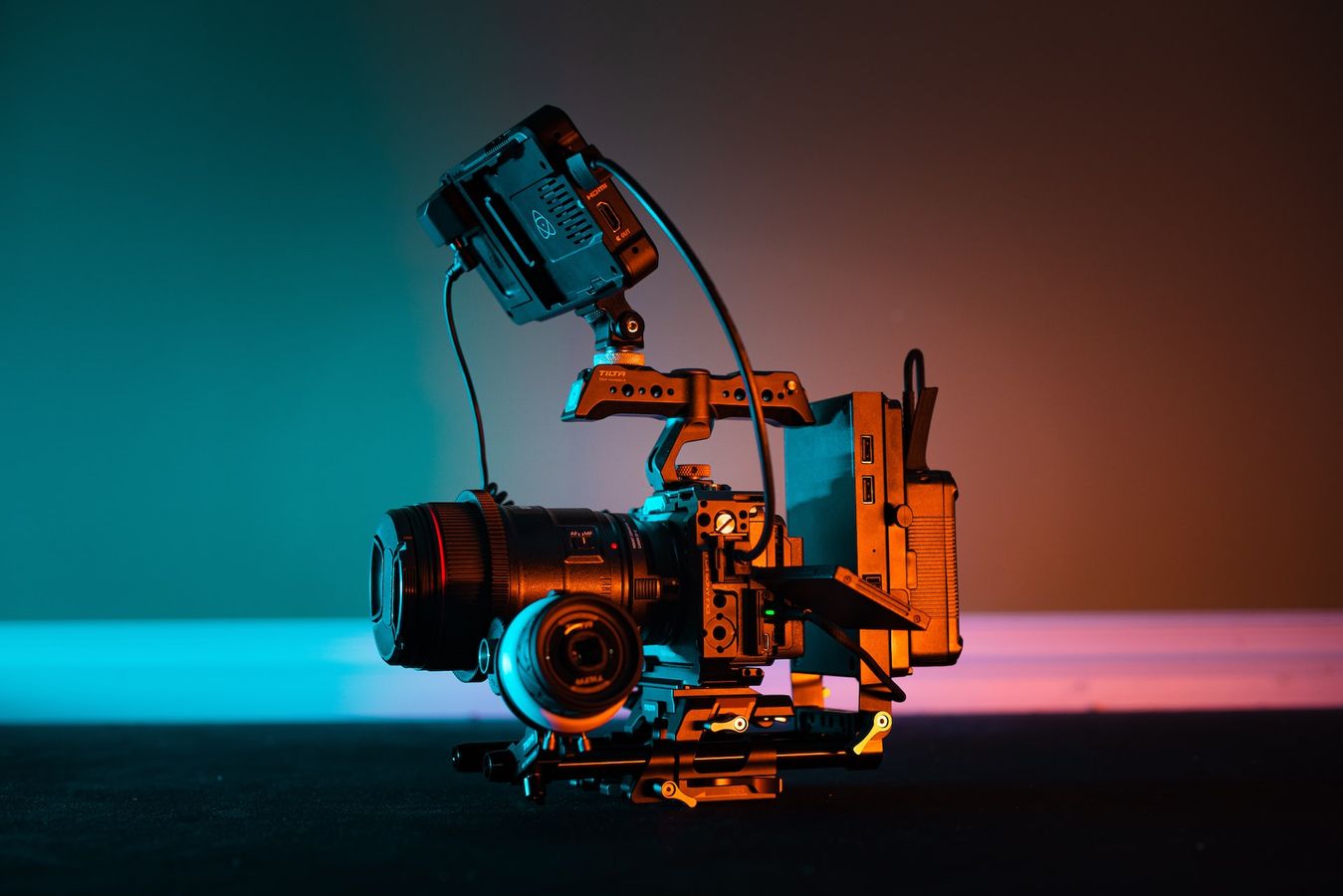Are you in the market for a new video camera setup? Whether you're a professional filmmaker, sourcing for a video production company, a content creator, or just looking to capture high-quality video for personal use, choosing the right film equipment can be a daunting task. There are so many options out there, from budget-friendly point-and-shoots to high-end cinema cameras, and it's hard to know where to start.
In this film camera buying guide, we'll explore the different types of video cameras and the key features to look for when shopping for a new setup. We'll also discuss lenses, tripods, microphones for film, and other accessories that can help you get the most out of your camera.
In this guide, you will learn:
- Why you need a video camera setup
- Key considerations when buying a video camera setup
- The different types of video camera setups available
- Key features to consider when choosing a camera
- Accessories to enhance your setup
- Tips for finding the best deal
- Editing and post-production software and equipment
- Common mistakes to avoid when buying a video camera setup
Why you need a video camera setup

There are many reasons why you might want to invest in a video camera setup. Maybe you're a professional filmmaker looking to upgrade your equipment, or a content creator looking to take your videos to the next level. Maybe you're a business owner looking to create promotional videos, or a hobbyist looking to capture memories and special moments.
Regardless of your reasons, a video camera setup can open up a whole new world of creative possibilities. With the right equipment, you can capture high-quality video that is sharp, clear, and full of detail. You can also experiment with different lenses and accessories to achieve different looks and effects.
There are also practical benefits to having a video camera setup. For example, a good camera can help you capture footage in low light or fast-moving situations, and it can also allow you to shoot in different resolutions and frame rates to suit your needs.
So, whether you're looking to create professional-grade videos or simply want to capture memories in the highest quality possible, a video camera setup can be a valuable investment.
Key considerations when buying a video camera setup

When shopping for a video camera setup, there are a few key considerations to keep in mind. First, consider your budget. How much are you willing to spend on a camera and related equipment? There are options at a wide range of price points, so it's important to decide on a budget upfront and stick to it.
Next, consider the purpose of your camera. What do you plan to use it for Different cameras are better suited for different types of videos, such as documentaries, events, or vlogging. Choose a camera that is best suited for your purposes, and consider your setup as a whole. For example, if you're a content creator you may want to think about background ideas for your videos.
Image quality is also important. Consider factors like resolution, dynamic range, and low-light performance when shopping for a camera. Lenses are a key part of any camera setup, so consider whether you want a camera with a fixed lens or one that can use interchangeable lenses.
Good audio is just as important as good video, so consider the audio capabilities of the camera you're considering. Does it have a built-in microphone, or will you need to use an external microphone?
Finally, think about any additional accessories you might need, such as tripods, lighting, or a carrying case. These can add to the overall cost of your setup though, so consider whether you really need them and factor them into your budget.
Find green screen studios for your next video shoot
Choose from 1000+ spaces and locations on Tutti and deal directly with space hosts for a quick, hassle-free booking process.

Types of video camera setups

There are several different types of video camera setups to choose from, each with its own set of pros and cons. Here's a brief overview of the main types of cameras you'll encounter when shopping for a new setup:
DSLR Cameras
DSLR cameras (digital single-lens reflex cameras) are popular among photographers and videographers because they offer high image quality and a wide range of lens options. Many DSLR cameras can also capture high-definition video, making them a good choice for video production. However, they can be bulky and heavy, and they often require additional accessories like a tripod or external microphone to get the best results.

Mirrorless cameras
Mirrorless cameras are similar to DSLR cameras in that they offer high image quality and a wide range of lens options, but they are generally smaller and lighter. They also tend to have faster autofocus and better low-light performance than DSLR cameras. However, they can be more expensive and may not currently offer the same level of durability as DSLR cameras.
Camcorders
Camcorders are portable, standalone video cameras that are designed specifically for capturing video. They often come with built-in microphones, image stabilization, and other features that make them well-suited for event videography and other types of handheld shooting. However, they may not offer the same level of image quality or lens options as DSLR or mirrorless cameras.
Action cameras
Action cameras are small, rugged cameras that are designed to be worn or mounted on helmets, bikes, or other sports equipment. They are often waterproof and can capture high-quality video in a wide range of environments. However, they generally have a fixed lens and may not offer the same level of control or image quality as other types of cameras.

Key features to consider

When shopping for a video camera setup, there are several key features to consider that will impact the quality and versatility of your camera. These include each of the following considerations:
Resolution
Resolution refers to the number of pixels in an image or video. The higher the resolution, the more detail and clarity you will be able to capture. Look for a camera that offers at least 1080p resolution (1920 x 1080 pixels) for high-definition video, or 4K resolution (3840 x 2160 pixels) for ultra-high-definition video.
Frame rate
Frame rates refer to the number of frames per second (fps) that a camera can capture. A higher frame rate will result in smoother, more fluid video, but it will also generate more data and require more storage. Consider what frame rate is appropriate for your needs and choose a camera that can capture at least 24 fps (frames per second) for smooth video. Check out this frame rate comparison and explainer on YouTube if you want to understand more.
Low light performance
If you plan to shoot video in low-light conditions, it's important to choose a camera with good low-light performance. Look for a camera with a large image sensor and a wide aperture lens, as these will help to capture more light and reduce noise in low-light situations.
Autofocus
Autofocus is a feature that helps a camera to focus on a moving subject or a subject that is in motion. Good autofocus is essential for capturing video of fast-moving subjects, so consider a camera with a fast and accurate autofocus system.
Image stabilization
Image stabilization is a feature achieved by camera stabilisers and gimbals, which helps to reduce camera shake and blur in handheld shots. It's especially useful for shooting video on the go and can help to produce smoother, more professional-looking footage.

Audio quality
Good audio is just as important as good video, so consider the audio capabilities of the camera you're considering. Does it have a built-in microphone, or will you need to use an external microphone? Look for a camera with a high-quality microphone and manual audio controls to ensure the best possible audio quality.
Accessories to enhance your setup

While a video camera is the most important part of any video camera setup, there are a number of accessories that can help you get the most out of your camera. These include:
Lenses
Different lenses can give you different looks and effects and allow you to capture different types of scenes and subjects. If you have a camera with interchangeable lenses, consider investing in a few different lenses to give you more creative options. Also, if you are planning to make movies, then you should check out some cinematic lenses as these can make a big difference in terms of how the finished video looks.
Tripods
A tripod is an essential accessory for any video camera setup. It will help you to keep your camera steady and eliminate camera shake, especially when shooting long takes or in low light conditions. Look for a sturdy, well-balanced tripod that can support the weight of your camera.
Lights
Lights can be used to enhance the look and feel of your video and can also help to illuminate subjects in low-light situations. Consider investing in a few basic lights, such as LED panels, continuous lights, or ring lights, to give you more control over the look of your footage. Remember, high-quality film lighting is often the difference between a professional-looking video and an amateur one.
Microphones
The built-in microphone on most cameras is usually sufficient for basic video capture, but if you want to capture high-quality audio, you'll need an external microphone. Consider investing in a shotgun microphone or a wireless lavalier microphone to capture clear, professional-sounding audio.

Bags and cases
A good bag or case is essential for protecting your camera and accessories while you're on the go. Look for a bag or case that is sturdy, well-padded, and has enough room to hold all of your equipment.
Stabilisers and gimbals
Arguably the most important piece of kit after a good camera and microphone is a gimbal or camera stabiliser. Handheld camera stabilisers and gimbals allow videographers to produce steady footage when shooting in motion, compensating for unwanted movement and shake. This is crucial for achieving smooth and professional motion shots.

Tips for finding the best deal

Video camera setups can be expensive, but there are ways to save money and get a good deal. Here are a few tips to help you find the best deal:
1. Research and compare prices
Before making a purchase, it's a good idea to do some research and compare prices from different retailers. Look for deals and discounts and consider purchasing from a retailer with a good reputation and return policy.
2. Look for bundles and packages
Many retailers offer bundle deals that include a camera and a selection of accessories at a discounted price. These bundles can be a good way to save money and get everything you need in one package.
3. Check for sales and discounts
Keep an eye out for sales and discounts from retailers, both online and in-store. Signing up for newsletters and following retailers on social media can also help you stay up to date on the latest deals and discounts.
4. Consider purchasing used or refurbished equipment
If you're on a tight budget, consider purchasing used or refurbished equipment. You can often find good deals on gently used equipment from individuals or from retailers that specialize in refurbished gear. Just be sure to check the condition of the equipment and make sure it comes with a warranty before making a purchase.
Editing software and equipment

Once you've captured your video, the next step is to edit and polish it to get the best possible results. This is an essential part of the video production workflow, so you should consider it when shopping for your camera setup. Editing typically involves trimming and rearranging footage, adjusting colour and exposure, adding music and sound effects, and more. In order to do this, you'll need the right software and equipment.
Video editing software
Video editing software is an essential tool for anyone looking to edit and produce videos. There are many different options available, ranging from free, basic programs like iMovie and Windows Movie Maker to professional-grade software like Adobe Premiere Pro and Final Cut Pro. Choose a program that is appropriate for your needs and budget, and that offers the features and capabilities you need.

Audio editing software
In addition to video editing software, you may also need audio editing software to clean up and enhance your audio. Programs like Audacity and Adobe Audition are popular choices for this purpose. They allow you to remove background noise, adjust levels, and apply effects to your audio tracks.
Graphics and animation software
Graphics and animation software can also be useful for creating custom graphics or animations for your video. Programs like Adobe After Effects and Blender are popular choices for this purpose. They allow you to create complex animations and special effects and add them to your video. You can also use AI video generators to quickly generate content.
Additional equipment and hardware
You may also need some hardware to help you edit and produce your video. This could include things like a good quality computer, a large monitor or display, a dedicated video editing keyboard, and external hard drives for storing your footage and projects. By investing in the right hardware, you can improve your workflow and get better results.

Overall, the right software and hardware can make a big difference in the quality and professionalism of your video. By choosing the right tools for the job, you can take your raw footage and turn it into a polished, professional video.
Common mistakes to avoid when buying a video camera setup

When buying a video camera setup, it's important to do your research and avoid common pitfalls. Here are a few mistakes to avoid:
1. Not considering your needs
One of the biggest mistakes you can make when buying a video camera setup is not considering your needs. It's important to think about what you'll be using the camera for and to choose a setup that is suited to your specific needs. For example, if you're a professional filmmaker, you'll need a camera with more advanced features and capabilities than if you're just looking to capture family memories.
2. Overpaying for features you don't need
Another mistake to avoid is paying for features you don't need. It's important to be realistic about what you'll actually use, and to avoid paying for features that you'll never use. For example, if you're just starting out with video, you may not need a camera with a high-end sensor or a large number of megapixels.
3. Skipping accessories
While it can be tempting to save money by skipping accessories, they can be an important part of your video camera setup. Lenses, tripods, lights and stabilisers can all help you achieve different looks and effects, and can also make it easier to capture smooth, stable video. Don't skimp on accessories if they'll help you get better results.
Key takeaways
A video camera setup can be a valuable investment for anyone looking to capture high-quality video. Whether you're a professional filmmaker that’s building a film studio, a YouTube content creator, or a hobbyist, there are many options to choose from, each with its own set of features and capabilities.
At the end of the day, a video camera setup can open up a world of creative possibilities and help you capture memories and special moments in the highest quality possible. By following the tips outlined in this film camera buying guide, you can find a setup that meets your needs and budget and start creating professional-grade videos.
Find film and video studios with Tutti
Choose from 1000+ spaces and locations on Tutti and deal directly with space hosts for a quick, hassle-free booking process.
















